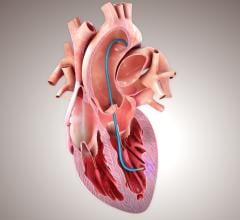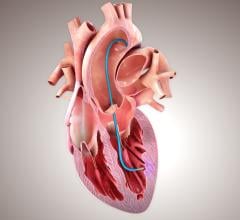
Getty Images
August 22, 2023 — A study in more than 15,000 people has found that physical fitness is linked with a lower likelihood of developing atrial fibrillation and stroke. The research is presented at ESC Congress 2023.1
Atrial fibrillation is the most common heart rhythm disorder, affecting more than 40 million people worldwide.2 It is estimated that one in three Europeans will develop atrial fibrillation in their lifetime. Patients with the condition have a five-fold higher risk of stroke than their peers. This study examined whether fitness was related to the likelihood of developing atrial fibrillation.
The study included 15,450 individuals without atrial fibrillation who were referred for a treadmill test between 2003 and 2012. The average age was 55 years and 59% were men. Fitness was assessed using the Bruce protocol, where participants are asked to walk faster and at a steeper grade in successive three-minute stages. Fitness was calculated according to the rate of energy expenditure the participants achieved, which was expressed in metabolic equivalents (METs).3
Participants were followed for new-onset atrial fibrillation, stroke, myocardial infarction and death. The researchers analysed the associations between fitness and atrial fibrillation, stroke and major adverse cardiovascular events (MACE; a composite of stroke, myocardial infarction and death) after adjusting for factors that could influence the relationships including age, sex, cholesterol level, kidney function, prior stroke, hypertension and medications.
During a median of 137 months, 515 participants (3.3%) developed atrial fibrillation. Each one MET increase on the treadmill test was associated with an 8% lower risk of atrial fibrillation, 12% lower risk of stroke and 14% lower risk of MACE.
Participants were divided into three fitness levels according to METs achieved during the treadmill test: low (less than 8.57 METs), medium (8.57 to 10.72) and high (more than 10.72). The probability of remaining free from atrial fibrillation over a five-year period was 97.1%, 98.4% and 98.4% in the low, medium and high fitness groups, respectively.
Study author Dr. Shih-Hsien Sung of the National Yang Ming Chiao Tung University, Taipei, Taiwan said: “This was a large study with an objective measurement of fitness and more than 11 years of follow up. The findings indicate that keeping fit may help prevent atrial fibrillation and stroke.”
For more information: www.escardio.org
Find more ESC conference coverage here
References and notes
1The abstract “Exercise performance and the risk of incident atrial fibrillation” will be presented during the session A journey through the athlete’s heart: from screening to imaging to electrical which takes place on Friday 25 August from 16:45 to 17:45 CEST at Science Box 2.
2Hindricks G, Potpara T, Nikolaos Dagres N, et al. 2020 ESC Guidelines for the diagnosis and management of atrial fibrillation developed in collaboration with the European Association of Cardio-Thoracic Surgery (EACTS). Eur Heart J. 2021;42:373–498.
3One metabolic equivalent (MET) is the rate of energy expenditure, or oxygen use, while sitting quietly (1 kcal/kg/hour or 3.5 mL/kg/min). Light activities (standing, walking slowly) use less than three METs, moderate-intensity activities (brisk walking) use three to six METs, and vigorous-intensity activities (jogging, playing football) use more than six METs.


 April 16, 2024
April 16, 2024 








